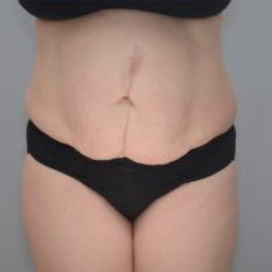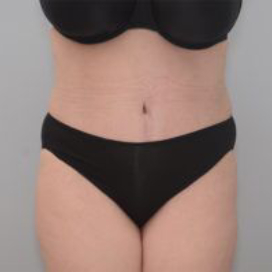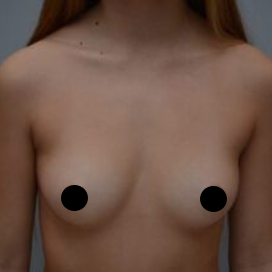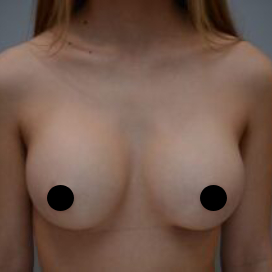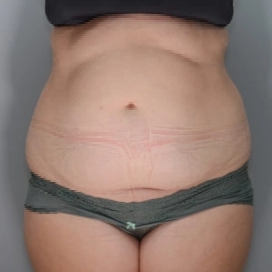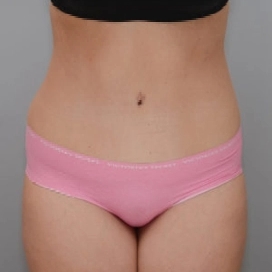With greater than 300,000 surgeries performed in the U.S. alone this past year, breast augmentation is the most common cosmetic surgery being performed. Women ranging from 18 years old to 50 years old are seeking consultations for breast augmentations now more than ever. Modern advancements in breast implant technologies allow for greater options for patients considering the operation. During a consultation, once I better understand my patient’s goals, I discuss the different decisions regarding surgery: size, profile, position, and incision.
size – choosing implants that fit your frame
Throughout the past century, breast style has dramatically changed. Even within the past decade or so, patients started favoring smaller, perky breasts as opposed to large, wide breasts. However, deciding the proper breast implant size is a very personal decision. Patients should consider how large of an implant will achieve their goals. During the consultation, I help patients size with different breast implants, until they feel comfortable with a particular one.
Sizing during a consultation is extremely important since it gives patients the opportunity to replicate the results of the surgery. Though most patients have considered size in detail prior to their consultation, imagining the results from varied sizes can be difficult. Sizing simulates an actual, expectable result from the surgery allowing patients to better visualize how the implants will change the appearance of their breasts. Patients are also frequently concerned that their new breasts won’t match their frame; sizing helps visualize the breasts in conjunction with the patient’s entire body.
profile – shape matters
Breast appearance includes two contributing factors: volume, or size, and contour. When considering a breast augmentation, exploring implant profiles is essential. I always allow the goals of the patient to direct the discussion of which profile to use. Today’s breast style highlights perky, sporty, and natural appearing breasts. Higher profile implants help to achieve this look since they are narrower and more projecting. Low profile implants result in less projection and therefore a wider, flatter breast. This photo shows the difference between the varied implant profiles.

In this lineup, I favor the full profile implants since they result in that natural, perky breast shape that most patients are seeking. Discussing the profile of your implant with your surgeon is key to achieving your goals for both volume and contour.
position – over v. under muscle
Breast implants can be positioned over the muscle, formally known as sub-glandular, or under the muscle, referred to as submuscular. For most patients I prefer a submuscular approach. Positioning the implant above the muscle increases the risk for rippling which can occurs when folds and wrinkles along the implant are visible through the skin, as shown below.
Though the figure shows multiple sites for rippling, the most problematic is shown in the first figure with rippling of the upper breast. Most patients prefer positioning the implants below the muscle to reduce such risk.

It’s always important to share your lifestyle and future goals with your surgeon so they can best explain your options for the implants’ position.
incision: where to cut = where you scar
With any surgery comes an incision which leads to a scar. Scars require about a year to 18 months to fully mature. Throughout the maturation process, the scar will go through a variety of phases changing both the width, depth, and pigmentation of the scar. For breast augmentation surgery, there are three main incision options: periareolar, transaxillary, and inframammary fold.

A periareolar incision, or around the areola, refers to a half circle incision around the bottom of the areola. Though this incision hides well in a natural line on the body where the pigmented areola meets the surrounding skin, there are consequences of this option. Using a periareolar incision requires cutting through the breast tissue which can disrupt healthy tissue and ducts, which may affect breastfeeding more than other incisions.
The transaxillary incision, or an incision within your underarm is another option available to patients. While this incision hides well most of the time, the scar is still visible in bathing suits, tank tops, or anything without sleeves. Also, this incision cannot be reused during an implant removal or exchanges of silicone implants. Since implants should be replaced after about 10-15 years, depending on the implant, using this incision primarily will still result in an additional incision and scars down the road.
My favorite incision to use is the inframammary fold, or breast fold, incision. The scar hides very well in the natural fold created by the breast, which is also an area that tends to heal well for patients. I favor this incision compared to the periareolar approach because I can position the implant without disrupting or injuring any of the breast tissue. The incision can also be used again for future surgeries which prevents patients from having two scars following implant exchange.
Consultations are a great time to better understand a patient’s goals and preferences. Each of these components should be discussed with your surgeon to ensure the surgical plan is safe, reasonable, and achieves your goals. Researching your options ahead of time and asking questions during a consultation is essential to being well-informed. Breast augmentation surgery can make a dramatic difference in a patient’s appearance so understanding the options is crucial to creating the appearance you desire.

